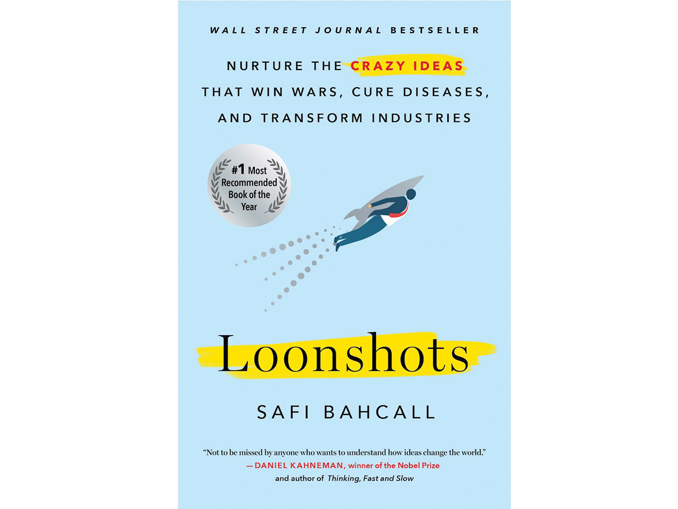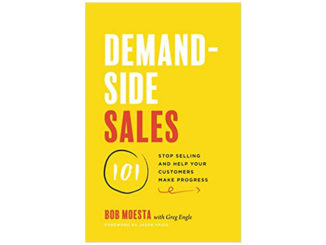Reviewed by Julie Kurd, VP Sales & Revenue, CMB, Boston, Massachusetts, jkurd@cmbinfo.com
Loonshots is a celebration of the “crazy ones” who persist through three failures to ultimately prevail—and of the organizational structures needed to support ideas that radically change an entire industry or a society. Safi Bahcall describes historic loonshots that, as the title purports, win wars (radar, enabling U-boats to be “visible”), cure diseases (statins can lower cholesterol), and transform industries (iPhones).
Who are these crazy ones, and how do we manage them? A physicist by training, Bahcall reminds us of historically strong companies such as IBM and Nokia that did not continue their upward trajectory because they failed to nurture loonshots in their organizations. Companies mess this up because they focus too early on effectiveness and efficiency. Turning to physics, Bahcall catalogues some critical elements of nurturing loonshots.
We learn that it’s typical for companies to ridicule, dismiss, and defund bold ideas through one of three major failures or “deaths” that occur on the path to viability. Thus, artists, who are responsible for high-risk, early-stage ideas, must “listen to the suck with curiosity” (LSC), which entails keeping an open mind and persevering during episodes of critique or failure as they shepherd loonshots through the early years of development.
For example, one of the three failure inflection points for statins was that statins failed to lower cholesterol in animal tests. But the inventor didn’t give up… he “listened to the suck with curiosity” and, through time, discovered a new reality. (The animals they tested statins in only possessed good cholesterol, so the result was false.) Today, statins are used regularly by tens of millions of people to lower their bad cholesterol.
Structurally, we learn that artists and their counterparts, soldiers (who are responsible for steady growth), are both important in an organization and require radically different organizational structures to perform. Soldiers focus on de-risking and keeping on trajectory (effectiveness and efficiency), while the artists focus on exploring ideas and taking risks to grow. Risk-taking is central to an artist’s success, while excessive risk-taking is trained out of soldiers.
As leaders, we need to manage and celebrate the effectiveness and efficiency of the soldiers, or else there is no business. However, we also need to nurture artists, because without experimentation, there is no future other than, at best, a straight-line growth trajectory. At worst, there is risk of missing the boat as disruptive technologies and conditions emerge. Also, structurally there’s a “crossover” or transfer that must happen as innovation is channeled into a viable product or solution that can be made commercially available. Having the leadership mindset to manage the crossover is key to changing the world as we know it.
Bahcall also explains that there are product-focused (P-type) loonshots such as the iPhone invention, and there are strategy-focused (S-type) loonshots such as the iTunes store. (Let’s sell individual songs on an app.) The iPhone delivered something new to the market (a portable phone with a camera), while the iTunes store was a new and unique way to deliver a product to market (unbundle albums and sell individual songs through an app versus at a store).
I recommend you read this book whether you lead a team, business unit, or company—or even as you are leading your family and raising kids—to think about the concepts of artists and soldiers, and how to nurture/manage each.
Are you inspired or enraged by either the artist or the soldier? What’s your tolerance for risk? We all have different levels of stamina when facing uncertainty and spending company money, managing people or our households, or even managing our own personal time. Do you take time to explore anything with unfettered abandon? Are you most at ease on the critical path? As a guide, let’s all focus on reducing ridicule, lowering the volume on “prevailing thoughts,” and protecting our artists from the destructive remark “that will never work.”
“Small changes in structure, rather than culture, can transform the behavior of groups the same way a small change in temperature can transform rigid ice to flowing water.”
—excerpt from Loonshots




